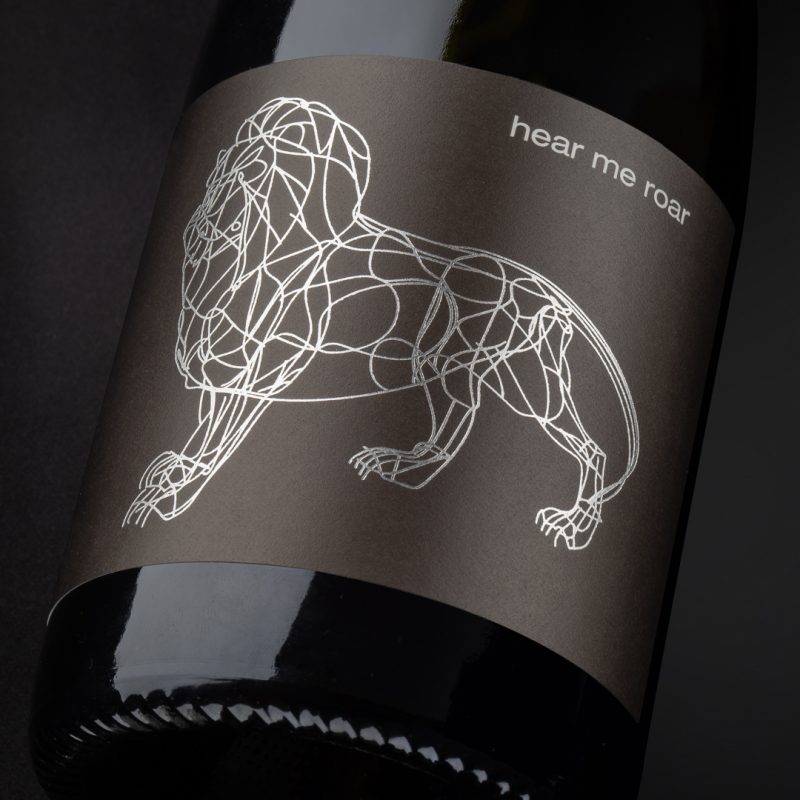Farmsafe Australia launches a new strategic direction
Farmsafe Australia has released its National Farm Safety Education Fund Strategy, aimed at significantly reducing injuries and fatalities in agriculture by 2030.
The Strategy calls for collaborative industry action across a range of work, health and safety impact opportunities.
Minister for Agriculture, Drought and Emergency Management, David Littleproud said the strategy was an important step towards safer farms for farmers, their families and communities.
“The health and safety of our farmers and their families is paramount,” Minister Littleproud said.
“Our farmers have continued to kick goals through the COVID-19 pandemic, with the agriculture sector expected to reach a record $66 billion in industry production this year.
“But it’s a high-risk working environment. This strategy sets a long-term course to improve farm safety.”
Five key impact opportunities have been identified as targets for further investment:
- Leadership and Cultural Change;
- The Next Generation of Farmers;
- Physical and Psychological Well-Being;
- Industry Endorsed Training and Continued Learning; and
- Evidence and to Incentivise.
Farmsafe Australia chairman Charles Armstrong says the Strategy sends a clear message that agriculture is ready to do things differently.
“There is no denying that agriculture needs to change its relationship to work health and safety practices. Not only is legislation demanding it, but our people are much too important to allow the culture of ‘she’ll be right mate’ to prevail,” Mr Armstrong said.
“Right now, we’re seeing firsthand the importance of our farmers to Australia – they are truly essential. But they also work in an extremely high-risk environment. Agriculture consistently ranks as one of the most dangerous industries for workers in Australia.”
The Strategy sets an aspiration to end on-farm fatalities, in line with the National Farmers’ Federation’s 2030 Roadmap.
“In the last decade, there have been over 600 fatalities on Australian farms. While it may not be realistic to cut this number to zero in the coming decade, we shouldn’t be aspiring for anything less.”
Mr Armstrong emphasised that the Strategy is not simply about safer systems, it is also about creating safer farmers by shifting attitudes towards better practices.
“Achieving cultural change, especially on farms, will require strong leaders, not just in our peak bodies, but on-farm, in our managers and overseers,” he said.
The Australian Government has dedicated a further $1.6 million in funding for farm safety over the next three years and Mr Armstrong said the real work of delivering the Strategy will begin now.
“Farmsafe cannot achieve the aspirations we’ve set by ourselves,” said Mr Armstrong.
“We are calling on industry and government to get behind the Strategy and look for ways in which we can connect and collaborate, not only to avoid duplication, but to enhance and bring together diverse resources in ways that can achieve more; more awareness, more engagement, more impact, [and] more value.”
Farmsafe Australia will report annually, through the Safer Farms Report, to measure performance against the Strategy and to ensure delivery of programs and initiatives that genuinely increase safety on farm.
“The National Farm Safety Education Fund Strategy will play a valuable role in guiding our work, health and safety progress as an industry,” Mr Armstrong concluded.
$37,500 given to Australian women in wine to advance their careers
Women in the Australian wine industry have been given financial support to advance their careers, thanks to the funds raised from a wine named Hear Me Roar.
Hear Me Roar, a multi-region, premium South Australian Shiraz from the 2018 vintage, was a project undertaken by the board of the Australian Women in Wine Awards (AWIWA).
It was released mid-2019 and the 400 cases that were made sold-out in under four weeks, with 100% of profits going to the career advancement of women in the wine industry.

It’s the first time anywhere in the world a wine has been created and made by women, to raise money for women in wine.
Applications for funding had to be received by February 2020, and distribution was planned for April 2020. However, this was delayed due to the COVID-19 pandemic.
The $37,500 raised has now been released, and the successful recipients are:
- Foni Pollit
- Anita Goode
- Sarah McDougall
- Kate Hill
- Stephanie Helm
- Lisa Bray
- Kate Day
- Hilary Mitchell
- Sarah Cecchi
- Kelly Pearson
- Leah Mottin
“Congratulations to all the recipients. We can’t wait to see what comes from the opportunities this funding brings,” said AWIWA founder and chair, Jane Thomson.
“I also want to thank all the people and businesses who donated their goods and services to bring this wine into existence. And to the four incredible winemakers; Sue Hodder, Emma Norbiato, Rebekah Richardson and Corrina Wright who produced such a stunning wine,” continued Ms. Thomson.
“It’s drinking beautifully at the moment – so if you were lucky enough to get your hands on any I recommend opening a bottle and raising a glass to the success of women in wine everywhere!”
Vintage hiring
Seasonal employment should be tackled in much the same way as any other hiring process but getting it wrong can prove expensive and, more critically, negative on the business.
Finding people who have the abilities to perform the required tasks and the personality traits to fit well with the values of senior management and the culture of the organisation can be a daunting task.
It becomes even more challenging when this period, such is the case during Vintage, is the busiest time of the organisation’s year.
There is little time to make up for employing the wrong person in a short-term role.
Thus you must get everything right from the start to ensure the best candidate is hired.
Prior planning is vital to achieving the desired results.
Basic steps can aid employers here in preparing to enter the jobs market with a vacancy.
- Determine both the tasks that will be performed by the seasonal employees and the abilities, personality traits and values they must possess to be successful in the role.
- Identify the selection tools required, from the job ad to assessing applications to undertaking tests or role play techniques that fit the job to interviewing candidates.
- Utilise the organisation’s management or key personnel to assist in the screening process and final analysis towards presenting an offer to the desired applicant.
Throughout this process it is important to give credence to a set level of standards and credentials that are required for the advertised position.
Ensure all candidates adhere to the same approach and questioning but at all times just keep it simple.
The earlier an organisation can begin its talent search will encourage better results as well.
With the Vintage period primarily taking in the months of January to April, one should consider starting their recruitment process in August or September of the previous year, should they know a specific role will require filling.
However, this process could also draw well into December – it is never really too late to seek out employees for an upcoming Vintage.
Consideration of past staff members could also prove invaluable while these may be the people the vineyard or winery turn to when a full-time or longer term vacancy arises.
Those who have had a positive experience within your organisation previously make any transition much easier.
You know them, they know you – it normally works well for everyone.
Remember though, your seasonal employees will play a crucial role in the success of your business, particularly within businesses that are impacted heavily by the specific time of the year as is the case here in the wine industry.
Vintage employees, just as much as long term staff, represent your brand and this cannot afford to be affected by undesirable outcomes.
Therefore, advanced planning, a stringent hiring process and a genuine investment in the organisation’s seasonal employees can make a tremendous difference.
Award winners encourage more women in wine industry
Despite many Australian women enjoying in the occasional glass of wine, fewer dabble in a career within the industry, and viticulturist Sarah Collingwood wants to change that.
Her parents have had a vineyard for the past 18 years, but she did not start working full-time in the wine industry until seven years ago.
“Now John [my husband] and I haven’t left, and we hope we’re doing this for the rest of our lives,” she said.
Ms Collingwood said women only made up roughly 10 per cent of viticulturists and wine makers in Australia.
In an attempt to improve those numbers and recognise women in the field, earlier this week the 37-year-old was among 16 women invited to pour wines they helped create at a local Canberra bar.
The gathering marked the 2016 Women in Wine Awards, and Ms Collingwood was nominated as a finalist in the owner and operator category.
Despite not placing, she was the first woman in the region nominated for the award.
“I guess generally [the industry] is a bit unrepresented by women,” she said.
“Hopefully these awards are a good way to show women there are a lot of different roles in the wine industry and it’s a great industry to be a part of.”
From grape to glass at a small winery
According to Ms Collingwood, the wineries surrounding Canberra are best known for their shiraz and riesling varieties.
“The climate is just perfect for those grapes,” she said.
“The Canberra district is seen as a pretty small wine area, we’re not as big as the Barossa and Hunter and things, but we’re definitely up and coming.”
Ms Collingwood said she and her family shared a variety of jobs at their Four Winds Vineyard.
Her role consists of being a business manager and viticulturist, which involves studying grapes and deciding when to harvest.
Her sister and brother-in-law are the winemakers, while her husband manages the vineyard.
“It’s really labour intensive for us to get the grapes that we want at the end of the season,” she said.
“We probably pick 20 or 30 tonnes and we try and pick everything in one or two days so all the grapes start to ferment at the same time.
“The vines continue to grow until February or March with the riesling and then we handpick around then.”
The family all pitch in during the crushing and pressing process by stomping on the grapes, extracting the colour from the skins.
“We joke about the harvest weight loss program because everyone during harvest loses weight because it’s long hours and quite physical as well,” she laughed.
“It takes about six months for us to have a finished product with the whites and 12 months for the reds.”
Ms Collingwood said she would encourage more women to consider a career in the industry because it was such a supportive one.
“We often joke that if our tractor broke down there would be a line of tractors outside ready to help,” she said, smiling.
ABC RADIO Canberra – Sophie Kesteven
Early grape markets signal promising 2017 Vintage
Prices offered in a number of major wine regions this year were not enough to cover the cost of growing the crop and vines have since been removed.
The Riverina Winegrapes Marketing Board in (RWGMB) southern New South Wales represents more than 300 growers in the Murrumbidgee Irrigation Area and surrounding districts.
RWMG CEO Brian Simpson said many of its members were stretched financially from years of low prices.
However, he is encouraged by early price signals.
“The domestic focused wineries, once one moves, they’re all going to jump and they’re all going to push to increase,” he said.
“They think $25, $50, $70 a tonne will get more fruit walking up to their weighbridge and that’s what they want.
The Riverina is home to some of Australia’s largest family-owned wineries including Casella Family Brands, McWilliams Wines and DeBortoli Wines.
Mr Simpson said growers should not rush to lock in prices just yet.
“Wineries are talking about moderately more for price,” he said
“There will be good demand coming into the 2017 season.
“If you’ve got available fruit, maybe you want to pause and speak to a couple of buyers before you make a decision to lock it in.
“But when you do lock it in, do it with a contract and make sure you’re happy with the terms of payment with that contract.”
He said the removal of Del Rios, one of Australia’s largest vineyards in Mildura, which produced around 25,000 tonnes of fruit, would make a difference to supply.
“That’s created a lot of air space in tanks and we’ve seen demand there, with people ringing us up and saying ‘is there any available fruit ?’
“I’m currently surveying our growers to see what’s available so we can start communicating with wineries about what we do have that they can actually start bidding for.”
ABC Rural – Laurissa Smith
Investment boost for Riverland wine region
South Australia’s Riverland region will benefit from a $40 million investment by one of Australia’s largest wine companies.
Accolade Wines will spend between $35 million and $40 million setting up a new glass bottling plant and warehouse facilities at its existing winery in Berri.
A spokesperson for Accolade said the company would withdraw over the next three years from a co-bottling arrangement it had with Penfolds owner Treasury Wine Estates, in South Australia.
The company plans to start construction on the new facility in late 2016 or early 2017, with the building phase expected to take about 18 months to complete.
It is anticipated 40 people will be employed once the plant is operating.
Accolade Wines is one of Australia’s largest wine companies, and owns brands including Hardys, Grant Burge and Banrock Station.
With a large portion of the industry seeing a downturn in recent years, the news has been welcomed by the region’s state MP.
Member for Chaffey Tim Whetstone said the benefits of the investment, particularly the potential employment opportunities, would be widespread throughout the region.
“The 40 jobs is a really good shot in the arm for the region,” he said.
“It is also Accolade’s commitment to the industry, and it is also acknowledging the region’s commitment to the wine industry.”
Investment a good sign for industry
Australian Vignerons chief executive Andrew Weeks said the investment was hopefully a sign of more positive times in the local industry.
“Having the confidence to invest $35 million to $40 million in a regional area of building a new bottling plant, that fits in well with some of the more confident and more optimistic signs that we have seen in recent times,” Mr Weeks said.
Acknowledging the benefits of the investment for the region, Mr Weeks said it was important for growers to also reap the rewards.
“What we really need is the growers to have confidence to reinvest in their businesses as well,” he said.
“It is not just about seeing improvement in wine company operations, and investment in regions is all good, but we need to have growers getting a reward for their results as well.”
Mr Whetstone agreed, saying he hoped local wine grape growers would also be beneficiaries.
“I would expect now that they would give some better consideration to better returns for our growers,” Mr Whetstone said.
“Any level of confidence in the wine industry is good”.
ABC Rural – Tom Nancarrow



